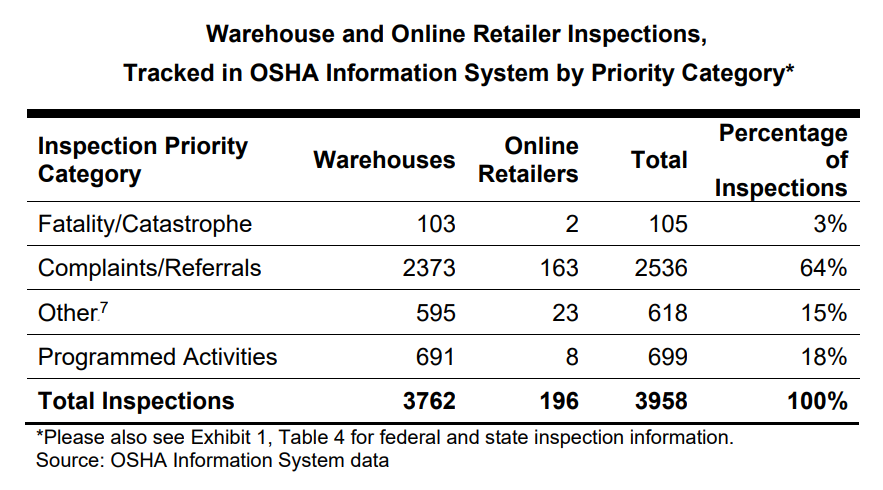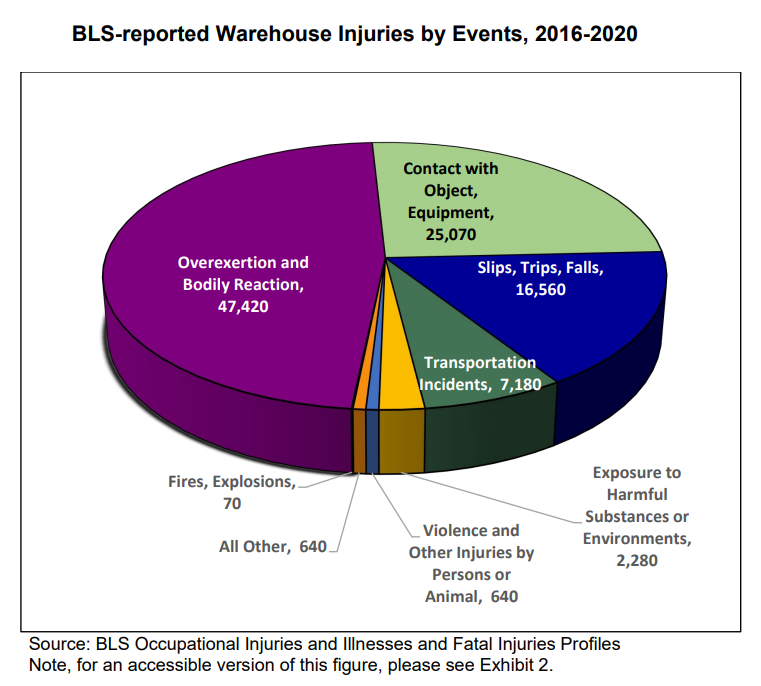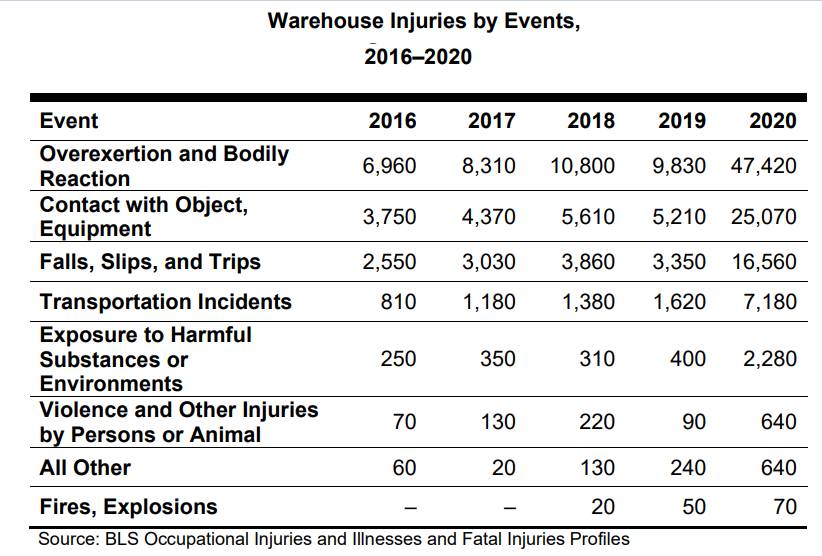Freight News:
Federal report says lack of OSHA inspections puts warehouse workers at risk
A new report released Thursday by the U.S. Department of Labor Office of Inspector General (OIG) says the Occupational Safety and Health Administration (OSHA) has “not effectively addressed the high injury and illness rates occurring at warehouses.”
The performance audit analyzed data that gathered from Oct. 1, 2016, through Dec. 31, 2021. The report findings also included interviews with OSHA officials and the review of guidance and regulatory standards.
The rates of illness and injury at warehouses were described by OIG as “consistently high.” In 2021, the rate was 5.5 per 100 employees, more than double the rate across all U.S. industries, the report said.

About 1.6 million people work at the nation’s roughly 20,000 warehouses, according to the report. In 2021, 19,709 facilities were classified as warehouses; an additional 38,785 were listed as electronic shopping and mail-order houses, which the OIG classified as “online retailers.” Some of these establishments operate warehouses. The online retailers employed 447,059 workers in 2021.
The OIG noted warehouse workers can face hazards resulting in serious injury due to powered industrial trucks, loaded pallets and repetitive movements. These dangers can be compounded when time-based delivery quotas and production goals increase because of the rise in e-commerce.
According to the U.S. Census Bureau, during the first year of the COVID-19 pandemic in 2020, there was a 43% increase in e-commerce sales, with sales rising from $571.2 billion in 2019 to $815.4 billion in 2020.
“With this surge, high-speed fulfillment of online orders has become the industry standard, with large online retailers promising free two-day, next-day, and even same-day deliveries,” the report said. “Various media outlets have reported that, to accomplish such fast deliveries, warehouse workers must work even faster, with some under increased pressure to meet production quotas. Additionally, in 2021, the [Department of Labor’s] Bureau of Labor Statistics’ industry ranking of injury and illness per 100 workers ranked warehouses 10th out of 92 industries.”

Even with the high illness and injury rates, the report noted OSHA conducted only a limited number of inspections at warehouses. A total of 3,762 inspections were done, 82% of which were primarily driven by complaints and referrals. The inspections represented an average of 4.1% of establishments categorized as warehouses.
“With serious injury and illness rates at more than double the national average, warehouses should be a crucial target for directing enforcement resources,” the report said.
The OIG said OSHA had limited visibility into the types of injuries and illnesses and the number of reports filed due to not effectively enforcing mandatory employer reporting. This also included establishments classified as online retailers. The OIG said this lack of enforcement is exposing warehouse workers at risk to hazards that can result in serious injury and illness. It also stressed that inspection delays have created backlogs and that fewer inspections under each program potentially left warehouse workers at risk.

The report also noted OSHA did not monitor the programs to ensure inspections were conducted as required.
“Monitoring is a key component of internal controls as outlined by the Government Accountability Office’s Standards for Internal Controls, which states that management establishes and operates monitoring to assess the quality of performance over time,” the report said. “Thirty-three percent of SST16 inspections occurred after the program end date.”
The OIG also determined OSHA did not have enhanced enforcement at locations with high rates of injury and illness at warehouses.
“The lack of monitoring potentially results in untimely inspections, backlog, and ultimately identification of safety issues at additional warehouses,” the report said.
OSHA said it recognizes the need to increase the effectiveness of its enforcement but noted the audit process was a missed opportunity to work collaboratively with OSHA to evaluate the effectiveness of its enforcement programs. OSHA also noted the data set OIG used was limited and the judgments on policies, targeting methodologies and resource allocation “go well beyond the OIG’s expertise and what the limited audit findings support.”
The post Federal report says lack of OSHA inspections puts warehouse workers at risk appeared first on FreightWaves.
Source: freightwaves - Federal report says lack of OSHA inspections puts warehouse workers at risk
Editor: Lori Ann LaRocco